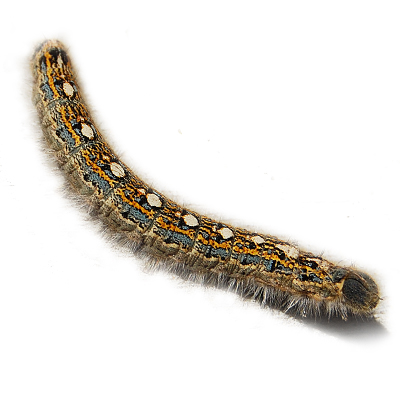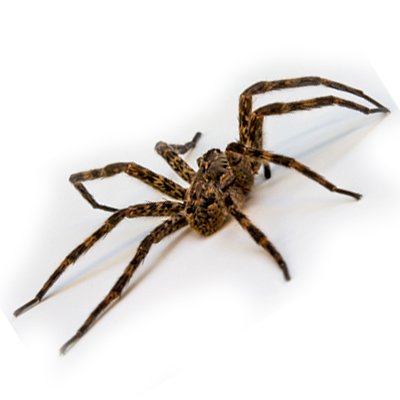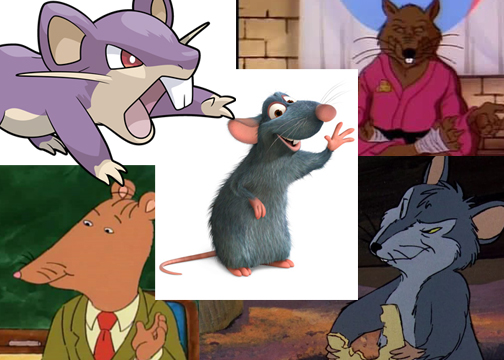
FOREST TENT CATERPILLARS
There are four species of tent caterpillars pitching camp across Canada, but the most notorious, the forest tent caterpillar, doesn’t really live in a tent. The others – the eastern, western and prairie tent caterpillar – true to their names, spin tent-like webs for protection during the larval stage. The forest tent caterpillar is by far the most prevalent and widely distributed of the four species, occurring from Nova Scotia to British Columbia.
Biology
Mass Migration
The forest tent caterpillar is bothersome enough to be rated among Canada’s top six forest enemies. It is generally more familiar to people than other destructive forest pests because of its tendency to migrate in large masses during the larval stage and to appear in massive moth flights during outbreak years. Widespread outbreaks of the forest tent caterpillar occur about every 10 years, but there have been lulls as short as six years and as long as 16 years between outbreaks. When they do occur, they may last from three to six years, depending on weather conditions and other natural control factors.
Damage
The forest tent caterpillar feeds voraciously on the foliage of trembling aspen and other members of the poplar family, and on sugar maple, birch, ash, oak and many other deciduous trees and shrubs as well. In hard times when starvation threatens, a migrating population has even been known to attack conifers. The other three species also feed on a variety of hosts, but prefer the leaves of cherry, apple, gooseberry, and willow trees to those of the poplars.
Fortunately, the caterpillars seldom kill trees outright, even when they completely strip them of foliage. Trembling aspen will sometimes refoliate the same year after a severe attack, utilizing buds originally destined for the following spring’s growth. Radial growth of the tree is reduced, however, and it is almost certainly weakened, making it more vulnerable to disease. Development of the tree may be affected for two years following an attack. During one four year infestation in the prairie provinces, growth losses were calculated at nearly 4 cu. m. per hectare per year.
Life Cycle
The life cycle of the tent caterpillars begins about midsummer, when the female moths encircle twigs on the host tree with bands of eggs 12-24 mm wide, covered with a dark-colored glue-like substance. The following spring, when the leaves begin to unfold, the small caterpillars emerge and begin their destructive feedings. As they grow to their maximum length of about 5 cm, the larvae become quite colorful. The mature larva of the forest tent caterpillar is dark brown with a broad blue band along each side. The back is black and marked by a row of white keyhole-shaped spots and very fine longitudinal orange lines. The blue color dominates when the caterpillar is viewed from the top.
The forest tent caterpillar does not make a tent but clusters in masses on the stem of the host tree, living on silken mats and spinning silken paths for traveling. Frequently, larvae migrate off the host tree to spin their cocoons on buildings and other objects, becoming a nuisance to country dwellers.
The larvae molt four times during their four to six week phase of life, after which they spin cocoons of several layers of silk to enter the pupal stage. Ten to 14 days later the adult moth emerges to repeat the life cycle. The moths are of varying shades of buff brown, and have a life span of about 10 days, during which they mate, with the females laying from 150 to 200 eggs in a ring like mass. During their shot lifespan the moths fly actively, with winds sometimes carrying them great distances.
Control Methods
Fortunately the caterpillars are controlled by various natural factors. Starvation often wipes out populations that have “exploded” under ideal conditions and subsequently exhausted their food supply. Also, the caterpillars are attacked by more than 40 types of parasites – some attacking the eggs, some the larvae and others the cocoons. The flesh-fly is an important control agent, depositing live maggots on the cocoons to feed on the body tissue of the pupae.
Mechanical means of control, without the use of chemicals, are often sufficient to remove tent caterpillars from single trees and small groups. Egg masses may be knocked off twigs, and twigs bearing colonies of caterpillars cut off and burned.
During the summer, tent colonies can be burned with a torch if care is taken to avoid spreading the fire or damaging tender bark areas of the tree.
Mass migrations into previously treated trees or small ornamentals can be easily prevented by means of a barrier or collar wrapped around the stem. This may consist of a narrow strip of masking tape or aluminum foil on which is smeared any one of a number of petroleum products. The same principle could be used on houses, cottages, sun decks and other structures. Insecticides such as carbaryl, malathion and methoxychlor are registered for use against tent caterpillars on forest trees, shrubs and ornamentals.
More selective, and less harmful to the environment than chemical insecticides, is the bacterial insecticide Bacillus thuringiensis (B.t.) registered under such names as Dipel, Thuricide and Novabac. Tests by Canadian Forestry Service researchers have shown B.t. to be highly effective at relatively low dosages.
It is important to remember that non-biological insecticides are toxic to humans and animals; care in handling is essential, and manufacturers’ instructions should be followed to the letter.
Local forestry officials, either federal or provincial, should be consulted before using any control material, whether chemical or biological.

5 Natural Remedies to Combat Spiders
Spiders are one of the most annoying pests in our homes. In some cultures, spiders are even associated with evil spirits. In general, spiders can be useful as they serve as a natural deterrent to other insects due to their predator-prey relationship with them. However, some harmful spiders like the Black Widow or Brown Recluse…

Hantavirus Guide: 10 Steps to Safely Clean-Up After Rodents
Put on disposable clothing and gloves.Put on goggles and disposable respirator mask and test the mask for proper fit (ensure goggles effectively protect eyes and do not interfere with the seal of the respirator).Mix disinfectant solution in spray bottle.Gently spray droppings/rodent nesting materials with the bleach, ensuring they are completely soaked – AVOID CREATING DUST.Allow…

Hantavirus Guide: Six Steps To Properly Fitting Your Respirator
The Centre for Disease Control and National Institute of Occupational Safety and Health recommend the use of HEPA (P100) quality filters for respiratory protection against the Hantavirus. Respirators come in various sizes and it is important to use a respirator that has been fitted to your face. It is very important that workers are aware…

Top 5 Fictional Rats: How They Compare to Real-Life Rats
To celebrate 2020 being the Chinese year of the rat, we will be posting one blog per month dedicated to rats! Here is April’s blog post, ‘Top 5 Fictional Rats and How They Compare to Real Life Rats’. Remy the Rat Remy is a rat from the popular Disney/Pixar movie, Ratatouille. This is a tale…

